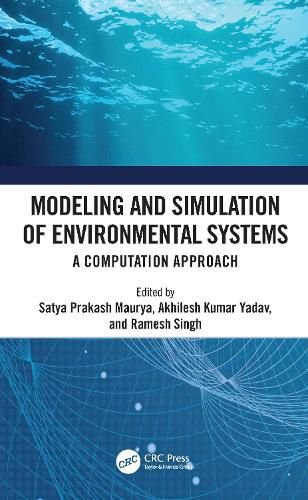Readings Newsletter
Become a Readings Member to make your shopping experience even easier.
Sign in or sign up for free!
You’re not far away from qualifying for FREE standard shipping within Australia
You’ve qualified for FREE standard shipping within Australia
The cart is loading…






This book presents an overview of modeling and simulation of environmental systems via diverse research problems and pertinent case studies. It is divided into four parts covering sustainable water resources modeling, air pollution modeling, Internet of Things (IoT) based applications in environmental systems, and future algorithms and conceptual frameworks in environmental systems. Each of the chapters demonstrate how the models, indicators, and ecological processes could be applied directly in the environmental sub-disciplines. It includes range of concepts and case studies focusing on a holistic management approach at the global level for environmental practitioners.
Features:
Covers computational approaches as applied to problems of air and water pollution domain. Delivers generic methods of modeling with spatio-temporal analyses using soft computation and programming paradigms. Includes theoretical aspects of environmental processes with their complexity and programmable mathematical approaches. Adopts a realistic approach involving formulas, algorithms, and techniques to establish mathematical models/computations. Provides a pathway for real-time implementation of complex modeling problem formulations including case studies.
This book is aimed at researchers, professionals and graduate students in Environmental Engineering, Computational Engineering/Computer Science, Modeling/Simulation, Environmental Management, Environmental Modeling and Operations Research.
$9.00 standard shipping within Australia
FREE standard shipping within Australia for orders over $100.00
Express & International shipping calculated at checkout
This book presents an overview of modeling and simulation of environmental systems via diverse research problems and pertinent case studies. It is divided into four parts covering sustainable water resources modeling, air pollution modeling, Internet of Things (IoT) based applications in environmental systems, and future algorithms and conceptual frameworks in environmental systems. Each of the chapters demonstrate how the models, indicators, and ecological processes could be applied directly in the environmental sub-disciplines. It includes range of concepts and case studies focusing on a holistic management approach at the global level for environmental practitioners.
Features:
Covers computational approaches as applied to problems of air and water pollution domain. Delivers generic methods of modeling with spatio-temporal analyses using soft computation and programming paradigms. Includes theoretical aspects of environmental processes with their complexity and programmable mathematical approaches. Adopts a realistic approach involving formulas, algorithms, and techniques to establish mathematical models/computations. Provides a pathway for real-time implementation of complex modeling problem formulations including case studies.
This book is aimed at researchers, professionals and graduate students in Environmental Engineering, Computational Engineering/Computer Science, Modeling/Simulation, Environmental Management, Environmental Modeling and Operations Research.